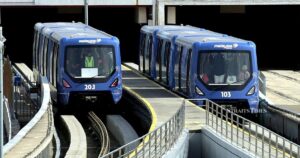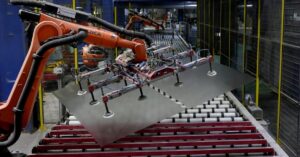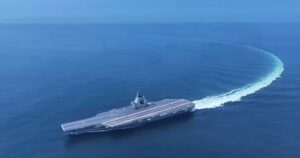KUALA LUMPUR: The Royal Malaysian Air Force (RMAF) will look beyond fifth-generation fighters as it charts a long-term modernisation path under the Multi-Role Combat Aircraft (MRCA) programme.
RMAF chief General Datuk Seri Muhamad Norazlan Aris told the New Straits Times that the MRCA programme, set for about 2035 under the Capability Development Plan 2055, must balance budgetary realities with long-term strategic vision.
“In charting the way forward, the RMAF must remain realistic about budgetary constraints while being visionary in its long-term planning.
“The MRCA programme, anticipated around 2035 and beyond, will arrive at a time when the choices are far wider, ranging from mature fifth-generation platforms to emerging sixth-generation systems and potentially even more advanced solutions.”
Fighter aircraft are typically grouped into “generations”, each reflecting leaps in technology and capability.
From early jet fighters of the 1950s to today’s stealthy fifth-generation jets, newer designs emphasise radar evasion, advanced sensors, networking and multi-role adaptability, while emerging sixth-generation concepts aim to integrate artificial intelligence, drone teaming and enhanced multi-domain connectivity.
Norazlan said the MRCA should not be viewed as a standalone solution.
He said future air power dominance depended on the RMAF’s ability to integrate all capabilities into a cohesive, resilient network.
“Current conflicts have shown that success is determined not by a single platform, but by the seamless orchestration of sensors, shooters, networks, space and cyber domains.”
He said the service’s vision must go beyond replacing ageing aircraft.
“It must embrace the vision of a fully integrated, adaptive and resilient force, one that ensures operational relevance and strategic deterrence well into 2040 and beyond.”
MALAYSIA’S AIR POWER
The RMAF has steadily built its air power over the past three decades with fighter aircraft, light combat jets and surveillance platforms. New acquisitions are set to arrive in the coming years.
Currently, the mainstay combat aircraft arsenal comprises 18 Sukhoi Su-30MKM Flankers, which entered service in 2007, and seven Boeing F/A-18D Hornets, acquired in 1997.
These are supported by 12 BAE Hawk 208/108 light combat aircraft, operational since 1994.
On the intelligence, surveillance and reconnaissance front, the RMAF operates three CN-235 aircraft converted into Maritime Surveillance Aircraft.
The conversion programme, in partnership with the United States, was completed in phases between 2020 and 2022.
Looking ahead, the RMAF will receive 18 KAI FA-50M light combat aircraft and fighter lead-in trainers, procured in May 2023 under a RM4 billion deal.
The first aircraft is expected to be delivered next year, with the remaining to arrive by 2028.
The air force will expand its intelligence, surveillance and reconnaissance capabilities with three TAI Anka-S medium altitude long endurance unmanned aerial systems, confirmed under a contract signed in 2022. Delivery is scheduled to begin this year.
Two Leonardo ATR 72 maritime patrol aircraft were ordered in 2023, with the first expected to be in service by next year.
The RMAF is strengthening air defence with two more Thales GM400 alpha radars, boosting long-range airspace surveillance to 515km.
In the recent Defence White Paper mid-term review, Defence Minister Datuk Seri Mohamed Khaled Nordin called for the procurement of a Medium Range Air Defence system in future.
© New Straits Times Press (M) Bhd






